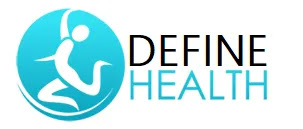Metatarsal Problems - Metatarsal Problems (Callus) in Athlete’s foot
Metatarsal Problems (Callus) in Athlete’s foot
Structure of our foot
- Consists of 26 bones
- Medically it has three parts as fore foot, mid foot and hind foot
- Hind foot has two bones, one, talus, connects the foot with leg and second, calcaneus, that forms heel
- Five smaller bones constructing mid foot are three cunieiform, navicular and cuboid bones
- Fore foot is the longer part of foot containing 19 bones and various other small bones for five toes
Causes of Athlete’s broken foot
- Crushing, bending, twisting or stretching of foot may cause breakage in foot bones.
- Kicking hard on something may cause fracture in toes.
- Falling from height or landing on feet in jumping may cause fracture in heel bones.
- Breakage in other bones of foot may be because of twisting or sprain in the foot.
- Prolonged stress at one point in foot may cause cracks in the bone named as stress fractures. Athletes like gymnasts, runners or dancers may experience such kind of fracture usually.
- Fractures in foot are mostly found in youngsters than adults as the bones and ligaments in young age are tender and can not resist the outer impact efficiently whereas the bones and ligaments become stronger much to resist the outer impacts to a greater extent.
Symptoms of Athlete’s broken foot
- Broken foot may cause swelling and pain.
- Normally the pain in broken foot is intolerable but in case of fracture in toe bones one can walk easily as the pain is normally less.
- Redness and Bruising are the common factors in any type of bone fracture.
- Foot may become numb, blue and cold.
- It may get deformed and twisted in inverse direction.
- A wound may be found near the fracture.
Diagnosis of broken foot of athlete
A
doctor has to be contacted immediately after the incident of bone fracture in
the foot. Someone must accompany you in going to the doctor because any type of
strain while driving your own self may cause further harm to the injury.
- X-ray should be taken to recognize the severity of the fracture.
- You may or may not take the x-ray if the fracture is in toes as the way of treatment is the same as in bruised toes.
- It is the Doctor who can decide to the need of x-ray as it may not be necessary when there is no pain in pushing various bones of the foot.
- Patient is unable to take even four steps at the time of inspection by the doctor.
- CT, MRI etc. can be taken in case of multiple fractures in the foot but usually they are not needed.
Treatment of broken foot of Athlete
- After being examined, by the doctor, about the severity of the fracture the treatment should be started accordingly.
- The fractured foot should be stabilized and elevated as a first aid and in case of minor injury
- Foot should be made to remain stable effectively
- In case of major fractures in foot bones the plaster should be applied to make it stable so that the effected bones could join properly with the passage of time.
Preventions for broken foot of athlete
- The broken foot should be prevented to move till the recovery completely.
- The process of PRICE i.e. protection, rest, ice, compression and elevation can be adopted to recover fast.
- The elevation of fractured foot helps in quick recovery as it reduces swelling and pain in the foot.
Self-care of broken foot of athlete
- The foot must be stabilized and elevated for quick recovery.
- The support that does not allow the injured foot from moving is the perfect for this purpose.
- Foot should be tied tightly but gently to the support so that blood circulation may not stop in the foot.
- The injured foot should properly be elevated with the help of pillows above the level of the body.
You
may walk with the help of crutches, if needed as walking on broken foot may
harm further.



